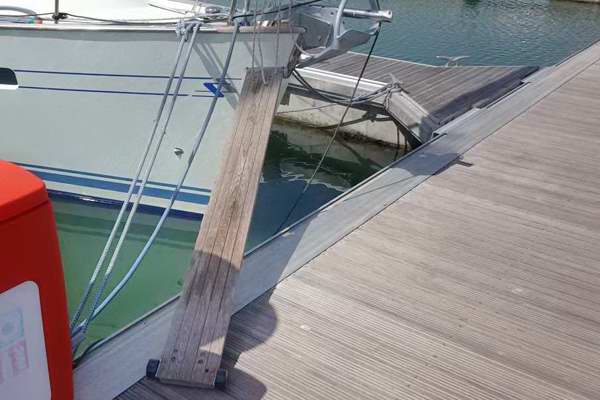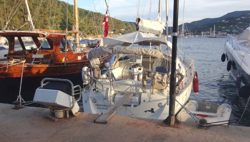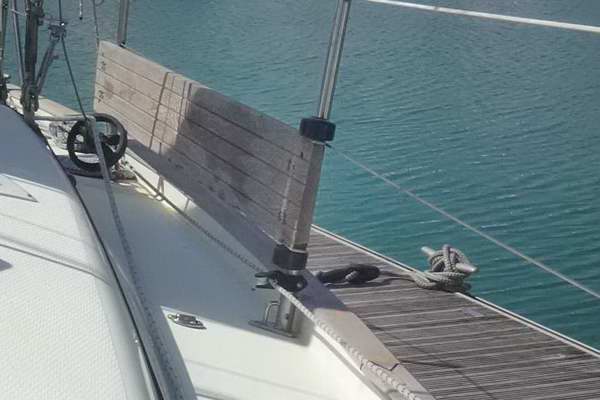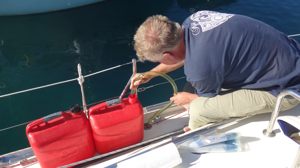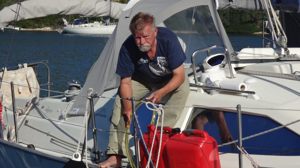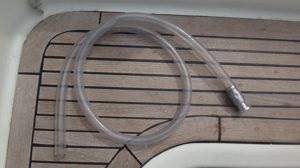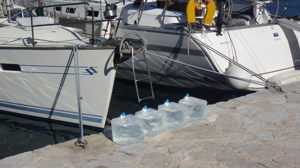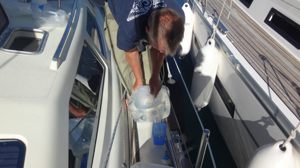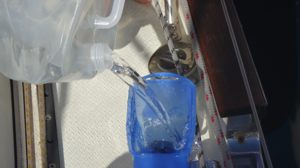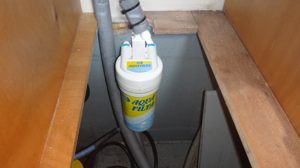In the Med
Sailing in The Med does confront you with a range challenges, different to those of Scandinavia and Northern Europe. primarily the climate is very different (after all this is why most of us go there) and much more difficult to predict than what we are used to up north where east- moving lows does guarantee a certain pattern of the changes to occur. Furthermore it can become very (and I mean very) hot in July and August. and with a sun high in the sky shining all day one must protect one selves from its effects. But also marinas and moorings are different. Rod Heikel has written an excellent small introduction on 'Mediterrenean Cruising' and I am not trying to compete, but during the last 5 years we have found a few points one should be aware of.
The sun
Mediterranean cruisers almost inevitably uses a bimini even at sea, considerably higher and wider than a normal cockpit tent. In a Northern European summer it is difficult to imagine that this should be an absolute necessity, and in fact we ourselves did choose a compromise where (this was possible as our main sheet is in front of the main hatch) and just had a normal cockpit tent integrated with the spray-hood and with with detachable back and sides. Thus it is possible to keep the 'lid' on while sailing. The is a problem however, that while at anchor the spray-hood 'protects you' from the cooling breeze unless it is possible to open the spray-hood window, an improvement we had made in Barcelona.
Still we missed something a little more efficient, and using old sail cloth we have made an awning that can be mounted in a few minutes. It is sitting between the shrouds and the aft-stay and is fastened under the boom. It works very well in harbour or at anchor, even when the spray-hood is down. It must however, be taken down while sailing.
Our 'new' awning is made of old sail-cloth (we have a sewing machine on board) and works very well
|
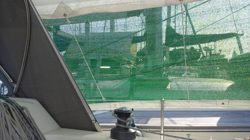 |
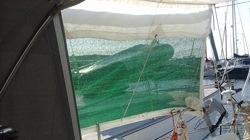 |
|
An efficient addition to the awning is a net type cover that will provide some shade and still let some air get through. We have made one of a commonly available plastic material (€1/m2) that is used locally to protect olive trees and vegetables
|
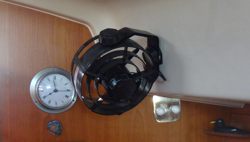 |
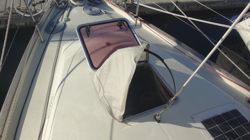 |
|
When at its warmest and there is no cooling breeze a small fan (Hella does some nice 12 volt that doe's not use much electricity) can make all the difference between the impossible and the bearable.
|
A wind-scoop may provide a lot of comfort. We have made our own version out of two battens and some old sailcloth
|
Pasarelle
Most marinas use floating pontoons while town quays often have massive concrete moles. In any case you typically moor bow- or stern to. We prefer bow to as it gives more privacy (and apart from the fact that you have to us a kedge anchor) it is much easier to control the mooring process. It does however, face you with a problem of getting ashore. We have a specially made bow-ladder fastened at the Rocna anchor that works very well. If you do want to use the main anchor though (with its ease of handling), a passarelle is an imperative and almost everyone has one. Thy come in all sorts some of them quite sophisticated and permanently mounted in the stern. There are more primitive solutions and as we sometimes go stern-to (it can be quite sociable and great fun to do 'people watching' at a town quay with many tavernas) we have one. It's a primitive plank mounted with two roller-skate wheels and when not in use fastened with 4 'U' bolts to two stanchions. And the beauty is that it can be used as a fender board as well
Fresh water shower
Mediterranean water is warm but very salt. We do like to be able to take a light shower after the morning swim. We have therefore mounted a fresh water outlet at the sugar scoop, it only takes a couple of litres every time and it is very nice.
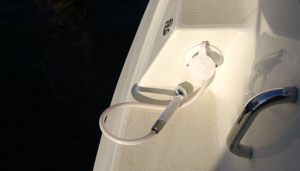 |
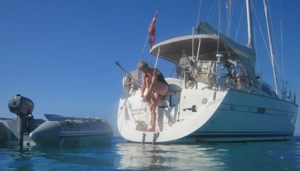 |
| Fresh water after a morning swim is very nice. |
Supplies
Getting supplies is not that easy everywhere. You may be at a distant anchorage or at a town-quay without electricity, water or diesel readily available. Concerning electricity please read the page on The electrical installations. As for liquids it is imperative to have some extra movable tank capacity so that water and/or diesel can be picked up at a distant filling station or a tap at a taverna.
Latest update October 2015




